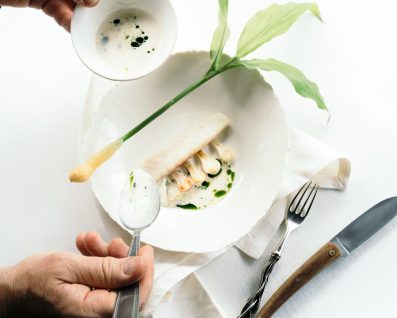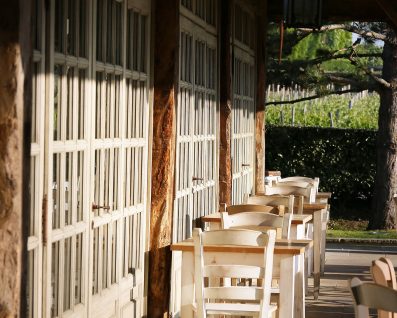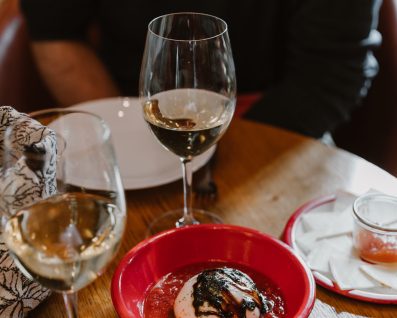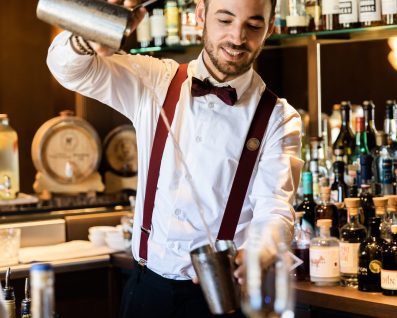Saint Émilion wine is renowned across the globe for it is part of the highly selective “club” of Premiers Grands Crus Classés, the highest rank for wineries in France. Yet what most people do not know is that the city of Saint Émilion itself is a quaint and bustling medieval village that is most definitely worth a visit. While Saint Émilion wine is a Grand Crus Classés, Saint-Émilion and its vineyards are registered in the equally exclusive UNESCO listing as a World Heritage Site.
Getting to Saint-Émilion: Convenient Transportation options
Les Sources de Caudalie is a 45-minute drive from the hotel. The concierge service will be more than happy to assist guests in selecting from a list of trusted car rental companies if visitors do not arrive with their own car. Visitors can easily park in one of the many parking lots around the Collégiale and Place Bouqueyre. Driving a car is also the best way to explore Saint-Émilion and its surrounding vineyards after visiting the picturesque village.
The wines of Saint-Émilion are heavenly, which is why it's important to keep in mind that a designated driver should be chosen. Even when spitting out wines, one will be tempted to sample a number of vineyards in the countryside of Saint-Émilion, which will inevitably increase the blood alcohol level. As the saying goes, "Don't drink (or spit) and drive."
Alternatively, hotel guests can take a taxi to Bordeaux Saint Jean train station for a train journey. From Bordeaux to Saint-Émilion, there is only a 35-minute train ride with spectacular scenery. The walk from the train station to the center of Saint-Émilion is just 15 minutes on foot.
If the journey from Bordeaux to Saint-Émilion seems complicated, the concierge at Les Sources de Caudalie can arrange a private car tour with a driver of the village of Saint-Émilion and the surrounding wineries. No need to spit, and a car is always a convenient way to transport freshly acquired cases of good wine back home.
Saint Émilion: A Rich and Wine-related History
A day-trip in Saint Émilion is a journey down history lane. Romans planted the first vines in the 3rd century BC, but it is in only five centuries later that a monk, called Emilian, inspired pilgrims to follow his steps to lead a simple, spiritual life freed from earthly pleasures and material goods.
Emilian initially lived in a cave, which was where the monolithic church and bell tower, which stood the test of time until today, were built. This led to numerous monastic settlements such as the Collegiate Church and Les Coredliers cloister, which are open for the public to visit. The small village was then occupied by the British monarchy until 1199, where the King restored Saint Émilion’s independence in return for the export of Saint-Émilion exceptional wines. This resulted in Saint Émilion wine becoming internationally popular and in its production to grow exponentially to keep up with ever-increasing demand.
The village has been astonishingly preserved throughout centuries. Visitors are lucky enough to be able to wander its cobblestone streets where wooden guild signs are still hanging from stores, where the city’s ancient wall ruins evidenced its strategic past and, perhaps most importantly, where one can enjoy arguably one of the most breathtaking views of the Bordeaux region. Built on a hill, Saint Émilion offers a 360°, bird-eye view of its surrounding vineyards, like crumpled coats of copper laid around the town for the eyes to marvel at.
The Saint-Émilion Wine Experience
There are now more than 5,400 hectares of vineyards with the Saint Émilion appellation. Wine-tasting Saint Émilion wines can thus come across as quite a daunting task, but there are some places to start from, and places to go to.
In the heart of the picturesque village is la Maison du Vin de Saint Émilion, the “Wine House”, with a tasting lounge for visitors to educate their palate to the town’s eponymous wines. Two thematic modules are offered: “Terroir and Discovery”, where the instructor will teach about Saint Émilion vines’ specificities in terms of grape varieties, soil quality and wine blends, which “students” will be able to taste for themselves thanks to a commented tasting of three different Saint Émilion wines. Taking the “Grands Crus Classés” module will teach one about the origin of the classification, about why Saint Émilion is a Grand Crus Classé and taste three Grand Crus Classés wines from three Saint Émilion geographical areas so as to better appreciate each wine’s subtle identity.
Nestled amongst the thousands hectares of vineyards are stupendous castles that encapsulate both Bordeaux’s architectural diversity and their owners’ dedication to wine.
- Château Pressac produces a Grand Cru Classé that can be enjoyed in a glistening glass, sipped on the castle’s terrace which is located at the top of the cliff. A feast for both the eyes and taste buds.
- Château Beaurang is a stripped-down approach to wine-tasting, but one that is based on a family-run approach whose passion is contagious. Claude, the current owner, will tell wine lovers everything they need to know about the day-to-day life of a winemaker, about the challenges of growing vines in a classé region and about how his family’s heart is poured in glass of the wine they are about to taste.
- Château Beau-Séjour Bécot is home to 22 hectares of sustainably grown vineyards whose grapes are the star ingredient of its Premier Grand Cru Classé wine. The estate’s sommelier Loïc articulately explains what it takes, vintage after vintage, to remain a Premier Grand Cru and how the estate is mixing Saint Émilion terroir with more modern approach to constantly quench their thirst for excellence.
Wineries, from Bordeaux to Saint Émilion, have nothing to prove when it comes to their undisputed superiority. Nevertheless, it is important to remember that behind a bottle label, there are passionate people, awe-inspiring vine landscapes and a two-millenar old history - all of which can be discovered in this gem of a French village: Saint Émilion.





